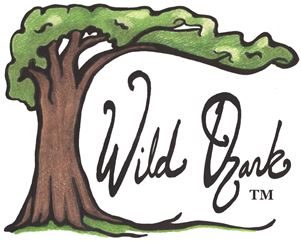A few days ago I took a walk out to the deep woods to see how the wild ginseng and habitat companions were doing.
The wild plants are in pretty hard to reach areas and I don’t get out there very often. When we plant seeds, we try to keep enough distance between the wild-simulated and the wild to avoid genetic pollution.
For more information on genetic pollution and diminishing variability in wild ginseng, here’s a couple of references:
- https://www.ncbi.nlm.nih.gov/pmc/articles/PMC2898772/ (this is about Russian ginseng, but the same principles most likely apply to American)
- http://wildginsengconservation.com/GeneticPollution.html (You’ll have to copy/paste that link – can’t make a live link because it’s not a secure site, and mine is)
The last time I took a look at this particular habitat area, it was in May, I believe. Ordinarily I can drive the 4-wheeler closer to the departure point. Not so on this trip today.

The trail had become overgrown with brambles. My quest to find wild ginseng in August was going to take a little longer than I expected.
I used a machete and hacked away for a while.
Bloody and sore after a few minutes, with still no progress, I called it quits and took off on foot uphill, toward the right. As soon as I got away from the trail, and started heading uphill, the going was a lot easier. No more brambles, at least.
I went out at late afternoon, so the light was already dim in the deep woods. Although I went looking for ginseng, I am always on the watch for other interesting plants.
Here’s one that caught my eye. There were only a few of them, all confined to one small area, much in the same way wild ginseng grows in small confined areas.
The photo isn’t very good because the light was very low right here. And I’m not good enough at using my camera to know how to compensate correctly for that, yet. Nothing I tried yielded a good focus.


The place where I found the orchids looked like it should have been a good place for ginseng, too, but there were none that I could see.
I did see some ginseng companion plants, though. Here’s Doll’s Eyes:

There was also maidenhair fern, blue cohosh, christmas ferns, goldenseal, and bloodroot present. I didn’t take many photos because daylight was fading fast and I still hadn’t found the ginseng.
However, a shaft of sunlight filtered between the tree canopies to fall on the nettles, and it made a beautiful photo so I had to stop for that:

Wood nettles are a great indicator of rich, moist, loamy soil – perfection for American ginseng. But there was still no ginseng in sight. I walked eastward a little longer, then downhill toward a spot I was fairly sure I could find some plants.


So I found a few plants and took a few pictures, and then it was time to get back to the trail before the sun went down much more and made it too difficult to find my way back!
